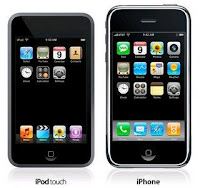 The world is suddenly taken over by a notebookmania and the sales figures are shooting higher as prices are more affordable. For the first time in history since the launch of MITS Altair 8800 in 1975, laptops sale has exceeded desktops in the third quarter of 2008.
The world is suddenly taken over by a notebookmania and the sales figures are shooting higher as prices are more affordable. For the first time in history since the launch of MITS Altair 8800 in 1975, laptops sale has exceeded desktops in the third quarter of 2008.According to a report by the EETimes, notebook PC shipments rose almost 40 percent in the quarter compared to the same period in 2007 to hit 38.6 million units. Desktop PC shipments declined by 1.3 percent for the same period to 38.5 million units.
The notebooks are more affordable and feature-laden than before and the spread of wireless networks could also be one of the reasons for this. Several corporate have moved to a completely mobile office but for centralised support services and even educational institutions are tempting students with academic pricing offers. Laptops sale at Comex in Oman also followed the similar trend and those models within the price range of 250 – 500 sold like hot cakes.




 Oman launches its very first suvey on ICT in Business sector. This survey is based on the UN's core indicators for ICT and aims to collect data about computing resources and their usage for business purposes in Oman. It also will analyse Omani / Expat presence in the ICT field classified based on gender.
Oman launches its very first suvey on ICT in Business sector. This survey is based on the UN's core indicators for ICT and aims to collect data about computing resources and their usage for business purposes in Oman. It also will analyse Omani / Expat presence in the ICT field classified based on gender.


